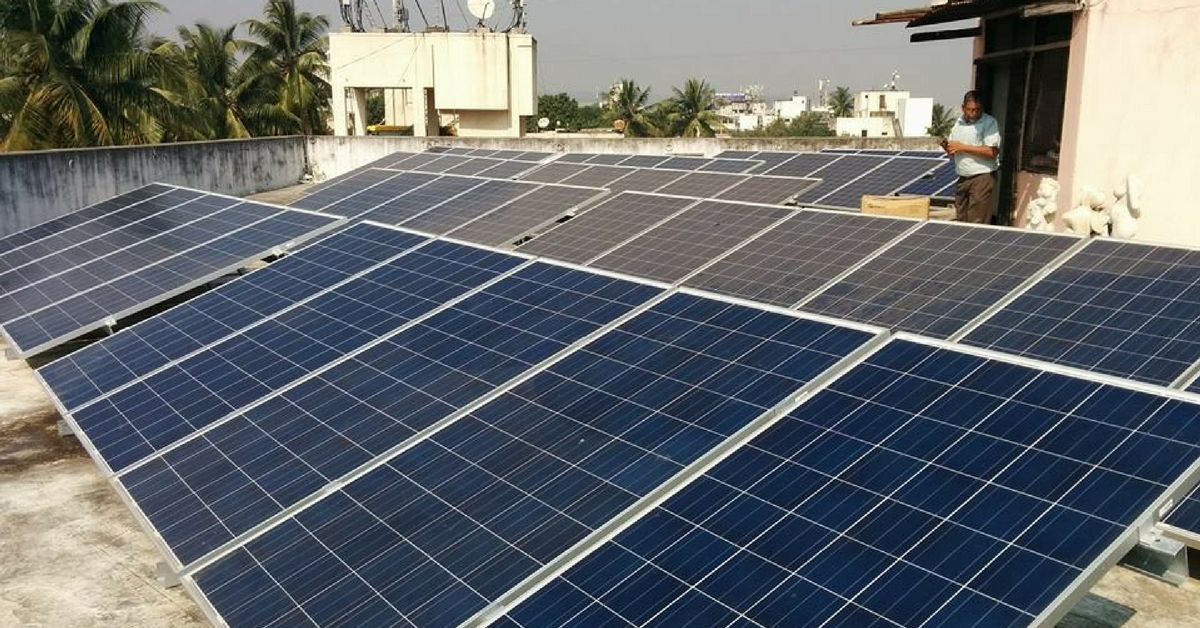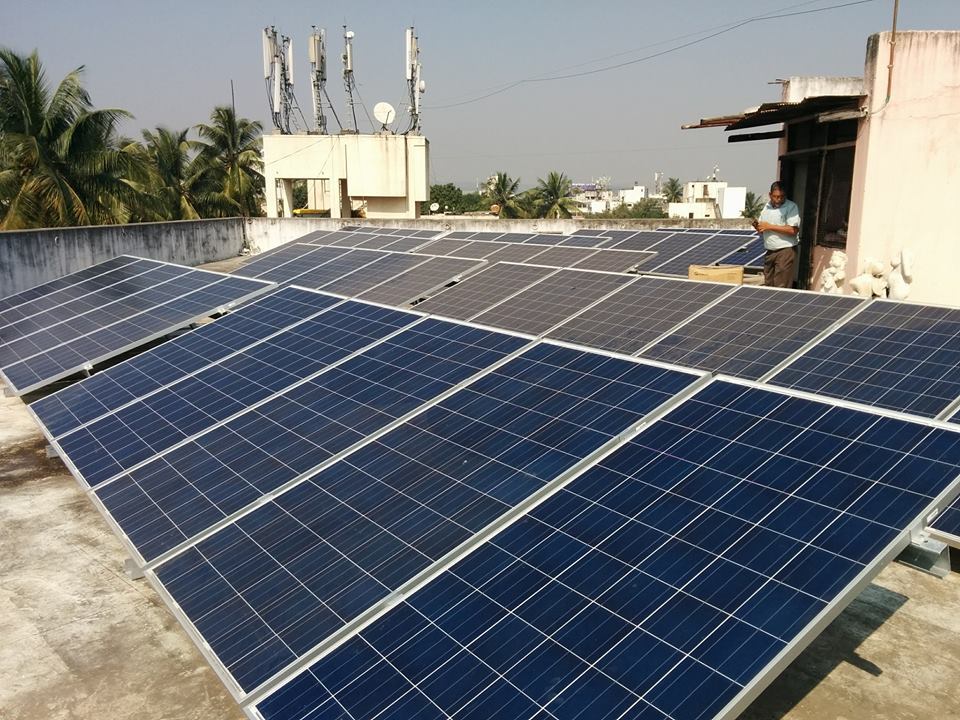As an alumni of BKPS College of Architecture, Pune, I was proud to read a recent Facebook post by Pushkar Kanvinde, Professor and Principal at BKPS, “Today we commissioned a solar electricity generation array on the roof of BKPS College of Architecture. It will generate the electricity required for our college, plus a little extra. It is equipped with ‘net metering’, and we will get credit for excess electricity generated that is supplied to the grid.”
This got me thinking—imagine if all colleges set up eco-friendly infrastructure like this one. What fantastic education it would be for future generations! Here, I have transcribed an interview I conducted with Prof. Kanvinde:
How did you get the idea of installing a Solar Energy Generation array on the college roof?
We got the idea from the Central Government, actually. It recommended the use of solar energy. One of our employees, Sanjay Singh, saw an advertisement on television, and after making some inquiries, approached me with the idea. I asked him to explore more and locate an agency who could supply and install the system.
How much did it cost, and how did you fund the initiative?
It cost us approximately ₹6 lakh for installation, with 8 kVA (kilo-volt-ampere) average load. We used the amount from our college development fund, that had accumulated over the years.
How much electricity does the setup generate, including seasonal variation, if any?
In clear weather conditions, it generates more than 10 kVA. Over the year, with seasonal variations, in light conditions, it should generate an average of 8 kVA.
How does the setup work, including connections to the building’s electric supply, net metering and supply to the city grid?
We had to ask the Maharashtra State Electricity Board (MSEB) to change the electric meter. It is now a net meter. From what we generate, we consume what we need, and the excess electricity is fed into the MSEB grid. We get credit for what gets fed into the grid, and whatever we consume is free for us.
Who provided the technical know-how?
Technical persons Sachin Kanawade and Ashok Jadhav from M/s. Vaishnavi Enterprises provided the technical support.
How much time does setting up everything take?
If all documents are clear, it takes 50 days for installation and to commence the net metering.
What is the maintenance involved?
Zero maintenance is required. We only need to clean, or occasionally wash and clean, the panels to remove dust settled that may otherwise reduce the light reaching the panels.
At what scale does this become economical/attractive to implement?
As per my understanding, for any load more than 3 kVA, this setup is economical in the long run. Further, in addition to the economics, you are in a way serving the nation by reducing carbon footprint, and also the pollution associated with thermal power generation, and you help save resources.
How do you see this initiative in the larger context?
It is just a beginning. Many other institutes are going for such initiatives, and if all institutes (architecture or otherwise—the numbers may be a few hundred thousand) go for solar electricity generation, that will help the nation a lot with improvement in the environment.
Adapted from a post originally published on ArchitectureLive.
Like this story? Or have something to share? Write to us: contact@thebetterindia.com, or connect with us on Facebook and Twitter.
NEW: Click here to get positive news on WhatsApp!
We bring stories straight from the heart of India, to inspire millions and create a wave of impact. Our positive movement is growing bigger everyday, and we would love for you to join it.
Please contribute whatever you can, every little penny helps our team in bringing you more stories that support dreams and spread hope.


